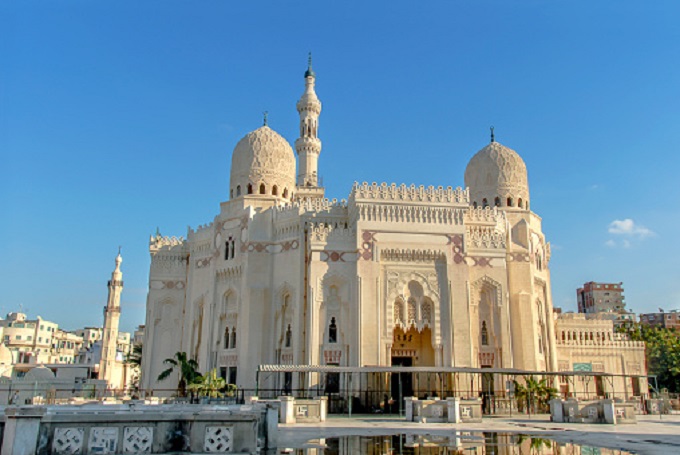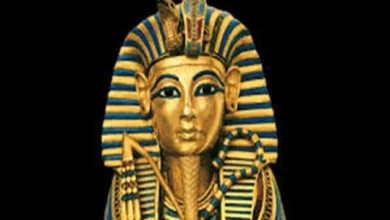Why Egyptian Alexandria is considered the world’s first cosmopolitan metropolis

The legendary conqueror Alexander the Great founded many cities that bear his name. However, only one of them achieved fame worthy of its founder. Alexandria in Egypt quickly became one of the most important cities of the ancient world. Capital of the flourishing Ptolemaic dynasty and later center of Roman Egypt, Alexandria was not only an important trading center. For centuries this magnificent city was a place of education and science, home to the legendary Library of Alexandria and more. Read on to find out how the majestic city reached the peak of its popularity by becoming the world’s first major metropolis.

Its advantageous location at the crossroads of the Mediterranean, the Nile Valley, Arabia, and Asia attracted people of all cultures and religions, making Alexandria the world’s first cosmopolitan metropolis. After the advent of Christianity, Alexandria became one of the centers of the new religion, which gradually supplanted paganism.
Soon the power vacuum in the city caused outbreaks of violence that devastated the prosperous urban life there. Oppressed by natural disasters and wars, the once-great metropolis declined until it was reduced to a small medieval port. It was only in the 19th century that Alexandria rose again to become one of the major cities of modern Egypt and the Mediterranean.
History
The history of Alexandria begins, according to classical historians, with a gold box. This war trophy, found in the royal tent of the Persian king Darius III, was where Alexander the Great locked up his most precious possession – the works of Homer. After conquering Egypt, Homer visited Alexander in a dream and told him about an island in the Mediterranean Sea called Pharos. It was here, in the land of the Pharaohs, that Alexander would lay the foundations of his new capital, a place unequaled in the ancient world. The ancient metropolis proudly began to bear the name of its founder-Alexandria.
Like many such stories, the story of Homer’s apparition is probably just a myth designed to present Alexander as a model warrior-hero. The story of the founding of the city may also be history, but it foreshadows its future greatness. The general appointed his favorite architect, Deinocrates, to oversee the construction of his magnificent capital. He ran out of chalk and marked the new city’s future roads, houses, and water channels with barley flour.
This abundance of donated food attracted large flocks of seabirds, which began to devour the newly planned city project. Many considered this a terrible omen, but Alexander’s seers took the unusual feast as a good sign, explaining to the ruler that Alexandria would one day provide food for the entire planet. Centuries later, large grain flotillas sailing from Alexandria would feed Rome.
In 331 BC, Rome was not yet a major settlement. But the area near the small fishing village of Rhakotis was fast becoming a city. Deinocrates had allocated space for Alexander’s royal palace, temples to various Greek and Egyptian gods, the ancient agora (market square and public meeting center), and residential areas. He envisioned that the strong walls would protect the new city, while canals diverted from the Nile would provide water for Alexandria’s growing population.
Intellectual center
Alexander never lived to see the city he imagined. Soon after Deinocrates began to draw lines with barley flour, the general set out on a Persian campaign that would take him to India, where, defeated and mortally wounded.
The empire created by Alexander the Great was bursting at the seams, torn apart by wars between his generals. But one of the diadochi, Ptolemy, organized the theft of Alexander’s body, returning the founder to his beloved city. In fulfillment of Alexander’s plan, Ptolemy I Soter chose Alexandria as the capital of the newly founded kingdom of the Ptolemies. Alexander’s body, enclosed in a luxurious sarcophagus, became a place of pilgrimage.
Over the following decades, Alexandria’s reputation and wealth continued to grow. Ptolemy was determined to make his capital a commercial and an intellectual center unrivaled in the entire ancient world. He laid the foundations of the Museion (Temple of the Muses), which soon became a center of learning that brought together leading scholars.
A covered marble colonnade connected the Museion with the adjacent stately building: the famous Library of Alexandria. In later centuries its chief librarians would be such academic stars as Zenodotus of Ephesus, the famous grammarian, and Eratosthenes, the polymath best known for calculating the circumference of the Earth.
Started under Ptolemy I and completed under his son Ptolemy II, the Great Library of Alexandria became the largest knowledge repository in the ancient world. From Euclid and Archimedes to Heron, famous scholars studied books written in Greek or translated from other languages. The Ptolemaic rulers were personally involved in supporting the library and expanding its impressive collection. Royal agents scoured the Mediterranean for books while port authorities checked every arriving ship, assigning any book found on board.
The collection grew so fast that part of it had to be housed in the Temple of Serapis (Serapeum). To this day, many historians and scholars still debate the size of the library. Estimates range from about four hundred thousand to seven hundred thousand scrolls in the halls at its height in the second century BC.
The “center” of the world
Thanks to its advantageous location, it didn’t take long for Alexandria to become a major epicentre of different cultures and religions. While the Museion and the Great Library attracted renowned scholars, the city’s major ports and bustling markets became meeting places for traders and shoppers. With the huge influx of immigrants, the city’s population grew dramatically. By the 2nd century BC, Alexandria had become a cosmopolitan metropolis. According to sources, more than three hundred thousand people called the city of Alexandria their home.
One of the first landmarks seen by an immigrant or visitor arriving in Alexandria from the sea was the majestic lighthouse overlooking the harbor. Built by Sostratus, a famous Greek architect, Pharos was considered one of the Seven Wonders of the Ancient World. It was a symbol of the greatness of Alexandria, a majestic lighthouse that underscores the importance and wealth of the city.
Landing in one of the two harbors, the future citizen was stunned by the grandeur of the Royal Quarter, with its palaces and luxurious residences. It housed the Museion and the famous Library of Alexandria. This area was part of the Greek Quarter, also known as Brujeion. Alexandria was a multicultural city, but its Hellenistic population was dominant. After all, the ruling Ptolemaic dynasty was Greek and kept its ancestry pure through intermarriage within the family.
A significant indigenous population lived in the Egyptian region – Rhacotis. The Egyptians, however, were not considered citizens and did not have the same rights as the Greeks. But if they learned Greek and became Hellenized, they could advance to the upper echelons of society. The last significant community was the Jewish diaspora, the largest in the world. Jewish scholars from Alexandria completed the Greek translation of the Bible, the Septuagint, in 132 BC.
Imperial Granary
Although the Ptolemies tried to maintain order, Alexandria’s diverse population was not easy to control, and sporadic outbreaks of violence were common. However, the main challenge to the Ptolemaic rule came not from within but from outside. The assassination of Pompey the Great in the harbor of Alexandria in 48 BC. led both the city and the kingdom of the Ptolemies on a new path with Rome.
The arrival of Julius Caesar, who supported the young Queen Cleopatra, marked the beginning of the civil war. Trapped in the city, Caesar ordered the ships in the harbor to be set on fire. Unfortunately, the fire spread and burned part of the city, including the library.
But the city was soon rebuilt in 30 BC. Alexandria and Egypt became the main centers of Roman Egypt, which was under the direct control of the emperor. It was also the second most important city in the Empire after Rome, with half a million inhabitants. It was from here that the grain fleets supplied the capital of the empire with vital foodstuffs.
Goods from Asia were transported along the Nile to Alexandria, making it a major global market. The Romans settled in the Greek area, but the Hellenistic population retained their role in governing the city. In addition to its economic role, the city remained an outstanding educational center, and the Roman emperors replaced the Ptolemaic rulers as benefactors.
The Romans highly regarded the Library of Alexandria. Emperor Domitian, for example, sent scribes to an Egyptian city on a mission to rewrite books that were lost to the Roman library. Adrian also showed great interest in the city and its famous library.
However, by the middle of the third century, the weakening of the imperial power led to the deterioration of the political stability of the city. The indigenous Egyptian population turned into a stormy force, and Alexandria lost its dominance in Egypt. Revolt of Queen Zenobia and Emperor Aurelian in 272 AD. devastated Alexandria, damaging the Greek area and destroying much of the Museion, the Library of Alexandria. All that remained of the complex was later destroyed during the siege by Emperor Diocletian in 297.
The fall
Alexandria has always been a curious site where eastern and western religions have met, collided, or mixed. The cult of Serapis is one such example. The Ptolemies introduced this mixture of several Egyptian and Hellenistic deities was introduced to the world by Ptolemies, soon becoming the predominant cult in Egypt. During the Roman Empire, temples of Serapis were built throughout the empire.
However, the most important temple could be found in Alexandria. The majestic Serapeum not only attracted pilgrims from all over the Mediterranean. It also served as a book repository for the main library. After the destruction of 272 and 297, all the surviving scrolls were transferred to the Serapeum.
Thus, the history of the Serapeum is intertwined with the fate of the Library of Alexandria. The cosmopolitan nature of Alexandria was a double-edged sword. On the one hand, this guaranteed the city’s success. On the other hand, it created a great potential for unrest, which could sometimes escalate into violent actions. This is exactly what happened in AD 391.
By that time, Constantinople had occupied Alexandria’s prominence in the Eastern Mediterranean. The grain ships of Alexandria now fed not Rome but its direct competitor. Within the city itself, Hellenistic education was challenged by rapidly developing Christian theology.
The infamous conflict of 391 CE . should not be viewed only through a religious lens. The ban of Emperor Theodosius I on pagan rituals provoked social violence, as did the closure of temples. However, the clash of various communities was primarily a political struggle, a battle for control of the city. During this conflict, the Serapeum was destroyed, dealing a fatal blow to the last remnants of the once-famous Library of Alexandria. Another victim of power was the woman philosopher Hypatia, who was killed by a Christian mob in 415. Her death symbolically marked the domination of Christians over the city of Alexandria.
Conclusion
While the political vacuum and cycle of violence between the pagan, Christian, and Jewish communities of Alexandria played a role in the city’s decline, there was an element that could not be controlled. Throughout its history, Alexandria has suffered from several earthquakes. But the tsunami of 365 AD. and the accompanying earthquake caused severe damage from which Alexandria will never recover.
The tsunami, recorded by the modern historian Ammianus Marcellinus, forever flooded most of the royal district, along with the harbor of Alexandria. To make matters worse, the saltwater flooding rendered the surrounding farmland useless for years.
The alarming situation in the city was exacerbated by the alienation of the inner regions of Alexandria. During the fifth and sixth centuries, Alexandria lost most of its trade to cities in the Nile Valley. The Roman Empire also weakened, losing control of the Mediterranean. After the fall of the eastern border in the early 7th century, Alexandria fell briefly under the rule of the Persians.
The Romans could regain their control under Emperor Heraclius, but in 641, the city was captured by Islamic armies. The Imperial fleet recaptured the city in 645, but a year later, the Arabs returned, ending nearly a millennium of Greco-Roman Alexandria. It was then that the last remains of the Alexandria Library were destroyed.
In the centuries that followed, Alexandria continued to decline. The appearance of Fustat (modern Cairo) overshadowed the once glorious city. A brief occupation by the Crusaders in the 14th century restored some of Alexandria’s wealth, but the decline continued with an earthquake that destroyed the famous lighthouse. Only after the Napoleonic expedition of 1798-1801, the city of Alexandria begin to regain its importance.
The 19th century was a period of its revival when Alexandria became one of the main centers in the Eastern Mediterranean. Currently, the sustainable city retains this role, being the second most important city in Egypt. Although the ancient city has largely disappeared under the burgeoning metropolis, the 1995 rediscovery of the underwater ruins of the famous royal district suggests that the city of Alexandria has yet to reveal its secrets.




